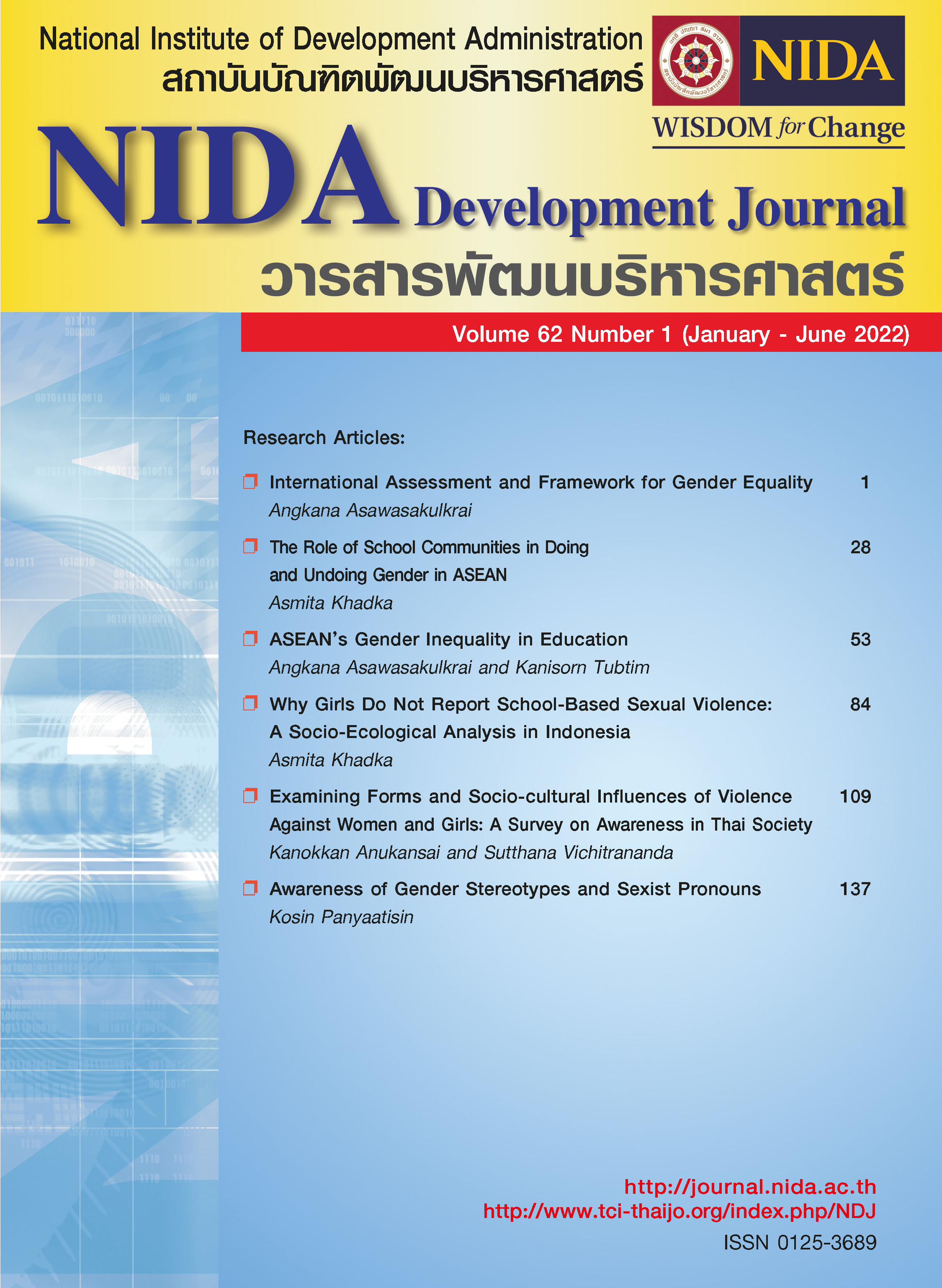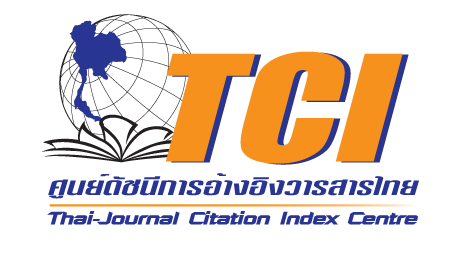International Assessment and Framework for Gender Equality
Keywords:
Gender Equality, Inequality, Gender Gap, Assessment, FrameworkAbstract
This study investigates the gender-related issues that impede women and girls’ abilities to survive and thrive. These issues – poverty, education, employment, violence, stereotypes, and political participation – prevent women and girls from becoming a healthy and productive member of society. Despite the world’s progress in all avenues, not all women and girls enjoy basic human rights and opportunities that are afforded to men and boys. In this capacity, there have been a number of international assessments, frameworks, indicators, and indices invented for the assessment of gender equality. These methods share the same purposes of assessing the status of gender equality, predicting the trajectories of future gender equality, and hopefully serving as a foundation for policy formulation to create a more inclusive society. This study therefore examines the methods and approaches used from past to present to assess the global landscape of gender equality. The examination and analysis find that while the frameworks and indices may serve as a useful lens reflecting to a certain extent the gender equality status in different countries, often times they fail to grasp contextual differences and the complexity and variability of the real gender-related issues among regions and countries. Therefore, while these assessments are well-intended, the efforts should continue to be the improvement, refinement, and expansion of areas to be included and measured. In addition, a qualitative investigation should always be considered since gender issues are rigorously context-specific and not always quantifiable.
References
Afridi, M. (2018). Equity and Quality in an education public private partnership. Retrieved from www.oxfam.org/en/research/equity-and-quality-education-public-privatepartnership
Bamrah, A. (2014). 34 years after signing, the US still hasn’t ratified CEDAW. Retrieved from https://civilrights.org/edfund/resource/34-years-after-signing-united-states-still-hasntratified-cedaw/
Bartůskov., L., & Kubelkov., K. (2014). Main challenges in measuring gender inequality. In FIKUSZ’14 Symposium for Young Researchers (pp. 19-28).
Bayissa, F., Smits, J., & Ruben, R. (2018). The multidimensional nature of women's empowerment: beyond the economic approach. Journal of International Development, 30(4), 661-690.
Biermann, F., Kanie, N., & Kim, R. (2017). Global governance by goal-setting: the novel approach of the UN Sustainable Development Goals. Current Opinion in Environmental Sustainability, 26, 26-31.
Branisa, B., Klasen, S., & Ziegler, M. (2013). Gender inequality in social institutions and gendered development outcomes. World Development, 45, 252-268.
Branisa, B., Klasen, S., Ziegler, M., Drechsler, D., & Jütting, J. (2014). The institutional basis of gender inequality: The Social Institutions and Gender Index (SIGI). Feminist economics, 20(2), 29-64.
Center for Philanthropy and Civil Society, National Development Administration. (2021). Elimination of gender stereotypes and sexist language in educational materials in primary and secondary levels: phase 1 and 2. Retrieved from http://www.cpcs.nida.ac.th/home/index.php/component/sppagebuilder/page/21
Chalmers, J., Campbell, I., & Charlesworth, S. (2005). Part-time work and caring responsibilities in Australia: Towards an assessment of job quality. Labour & Industry: a journal of the social and economic relations of work, 15(3), 41-66.
Chaney, P. (2016). Mind the gap? Civil society policy engagement and the pursuit of gender justice: critical discourse analysis of the implementation of the Beijing Declaration and Platform for Action in Africa 2003–2015. Review of African Political Economy, 43(150), 608-629.
Consortium on Gender, Security and Human Rights. (2017). Feminist Critiques of the Sustainable Development Goals- Analysis and Bibliography. Retrieved from https://genderandsecurity.org/sites/default/files/Feminist_Critiques_of_the_SDGs_-_Analysis_and_Bibliography_-_CGSHR.pdf
Cornwall, A., & Edwards, J. (2015). Introduction: Beijing+ 20–where now for gender equality?. IDS Bulletin, 46(4), 1-8.
Eden, L., & Gupta, S. (2017). Culture and context matter: Gender in international business and management. Cross Cultural & Strategic Management.
Einarsd.ttir, .. (2020). All that Glitters is Not Gold: Shrinking and Bending Gender Equality in Rankings and Nation Branding, NORA. Nordic Journal of Feminist and Gender Research, 28(2), 140-152
Englehart, N., & Miller, M. (2014). The CEDAW effect: international law's impact on women's rights. Journal of Human Rights, 13(1), 22-47.
Esquivel, V. (2016). Power and the Sustainable Development Goals: a feminist analysis. Gender & Development, 24(1), 9-23.
Facio, A., & Morgan, M. (2009). Equity or equality for women. Understanding CEDAW’s equality principles, 1-38.
Guti.rrez-Mart.nez, I., Saifuddin, S. M., & Haq, R. (2021). The United Nations Gender Inequality Index. In Handbook on Diversity and Inclusion Indices (pp. 83-100). Edward Elgar Publishing.
Hausmann, R., Tyson, L., & Zahidi, S. (2012). The global gender gap report 2012. Geneva: World Economic Forum.
Hellum, A. & Aasen, H. (2013). Women’s Human Rights. CEDAW in International, Regional and National Law. New York: Cambridge University Press.
International Labour Organization. (2022). The gender gap in employment: what’s holding women back? Retrieved from https://www.ilo.org/infostories/en-GB/Stories/Employment/barriers-women#global-gap
Kanie, N., Griggs, D., Young, O., Waddell, S., Shrivastava, P., Haas, P. M., ... & Kőr.si, (2019). Rules to goals: emergence of new governance strategies for sustainable development. Sustainability Science, 14(6), 1745-1749.
Klasen, S. (2017). Gender, institutions, and economic development. GrOW Work. Pap. Ser. No. GWP-2017-04, McGill Univ., Montreal.
Liebowitz, D., & Zwingel, S. (2014). Gender equality oversimplified: Using CEDAW to counter the measurement obsession. International Studies Review, 16(3), 362-389.
MacFeely, S., Barnat, N., Anu Peltola, A. (2019). Comparing Global Gender Inequality Indices: What can they tell us about development? Work Session on Gender Statistics. United Nations Economic Commission for Europe, Working Paper 16.
McKinsey Global Institute. (2018). The power of parity: advancing women equality in Asia Pacific. Retrieved from https://www.burmalibrary.org/sites/burmalibrary.org/files/obl/docs21/Society%20and%20Culture/Pansy-Tun-Thein-2015-Gender_Equality_and_Cultural_Norms_in_Myanmar-en.pdf
Mullins, L. (2018). CEDAW: The challenges of enshrining women’s equality in international law. Public integrity, 20(3), 257-272.
Narayan, U. (1997). Restoring history and politics to third world traditions, in Narayan, U. (ed.), Dislocating cultures: identities, traditions and third world feminism. London: Routledge, pp. 43-80, 195-203.
Och, M. (2018). The local diffusion of international human rights norms–understanding the cities for CEDAW campaign. International Feminist Journal of Politics, 20(3), 425-443.
OECD (2012), Closing the gender gap: act now, OECD Publishing, Paris.
OECD (2019), SIGI 2019 Global Report: Transforming Challenges into Opportunities, Social Institutions and Gender Index, OECD Publishing, Paris.
Parisi, L. (2009). The numbers do (n't) always ADD up: Dilemmas in using quantitative research methods in feminist IR scholarship. Politics & Gender, 5(3), 410-419.
Permanyer, I. (2013). A critical assessment of the UNDP’s gender inequality index. Feminist Economics, 19(2), 1-32.
Rai, S. (2003). Mainstreaming gender, democratizing the state. Manchester University Press.
Razavi, S. (2016). The 2030 Agenda: challenges of implementation to attain gender equality and women's rights. Gender & Development, 24(1), 25-41.
Risse, T., Ropp, S., & Sikkink, K. (Eds.). (2013). The persistent power of human rights: From commitment to compliance (Vol. 126). Cambridge University Press.
Runyan, A., & Sanders, R. (2021). Prospects for Realizing International Women’s Rights Law Through Local Governance: the Case of Cities for CEDAW. Human Rights Review, 22(3), 303-325.
Sander, G., & Keller, N. (2021). McKinsey Gender Parity Report. In Handbook on Diversity and Inclusion Indices (pp. 164-175). Edward Elgar Publishing.
Schedler, A. (2012). The measurer’s dilemma: Coordination failures in cross-national political data collection. Comparative Political Studies, 45(2), 237-266.
Thein, P. (2015). Gender equality and cultural norms in Myanmar. In International Conference on Burma/Myanmar Studies. Retrieved from https://www.burmalibrary.org/sites/burmalibrary.org/files/obl/docs21/Society%20and%20Culture/Pansy-Tun-Thein-2015-Gender_Equality_and_Cultural_Norms_in_Myanmar-en.pdf
Ulrich, J. (1999). Confronting gender-based violence with international instruments: Is a solution to the pandemic within reach. Ind. J. Global Legal Stud., 7, 629.
UN Women & UN DESA. (2021). Progress on the Sustainable Development Goals-The Gender Snapshot 2022. Retrieved on 23 October 2022 from https://www.unwomen.org/sites/default/files/2022-09/Progress-on-the-sustainabledevelopment-goals-the-gender-snapshot-2022-en_0.pdf
UN Women. (1979). Convention on the elimination of all forms of discrimination against women (CEDAW). Retrieved from https://www.un.org/womenwatch/daw/cedaw/
UN Women. (2000). Progress of the World's Women 2000. Biennial Report, United Nations Development Fund for Women, New York.
UN Women. (2015). Beijing Declaration and Platform for Action, Beijing +5 Political Declaration and Outcome. Retrieved from https://www.unwomen.org/en/digitallibrary/publications/2015/01/beijing-declaration
UN Women. (2018). Facts and figures: economic empowerment. Retrieved from https://www.unwomen.org/en/what-we-do/economic-empowerment/facts-and-figures
UN Women. (2021). Four facts you need to know about gender and poverty today. Retrieved from https://data.unwomen.org/features/four-facts-you-need-know-about-gender-andpoverty-today
UN Women. (2022). Poverty deepens for women and girls, according to latest projections. Retrieved from https://data.unwomen.org/features/poverty-deepens-women-and-girlsaccording- latest-projections
UNESCAP & UNU-IAS. (2018). Partnering for Sustainable Development Guidelines for Multi-stakeholder Partnerships to Implement the 2030 Agenda in Asia and the Pacific. Retrieved on 22 October 2022 from https://www.unescap.org/sites/default/files/MSP%20Guidelines.pdf
UNICEF. (2020). Equal rights and opportunities for girls and boys help all children fulfil their potential. Retrieved from https://www.unicef.org/gender-equality
United Nations Development Programme. (2014). FAQ-Gender Inequality Index. Retrieved on 23 October 2022 from https://www.undp.org/sites/g/files/zskgke326/files/migration/tr/HDR2014-FAQ-GIIEN.pdf
United Nations Development Programme. (2022). Gender Inequality Index (GII). Retrieved on 23 October 2022 from https://hdr.undp.org/data-center/thematic- compositeindices/gender-inequality-index#/indicies/GII
World Bank. (2021). Global Female Population (% of total population). Retrieved from https://data.worldbank.org/indicator/SP.POP.TOTL.FE.ZS
World Economic Forum. (2022). Global Gender Gap Report 2022 Insight Report July 2022. Retrieved from http://reports.weforum.org/global-gender-gap-report-2022
Downloads
Published
How to Cite
Issue
Section
License
Copyright (c) 2023 NIDA Development Journal

This work is licensed under a Creative Commons Attribution-NonCommercial-NoDerivatives 4.0 International License.





